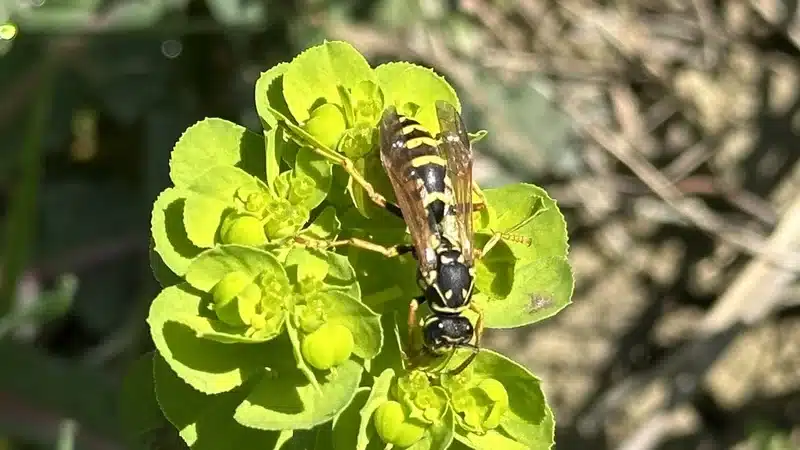When you hear buzzing in your yard, it’s natural to wonder whether you’re dealing with a wasp vs bee situation. These flying insects look similar at first glance, but knowing the differences can help you decide whether to enjoy their presence or call for professional removal. Both wasps and bees play important roles in our ecosystem, but they behave very differently around people and their homes.
Understanding what’s buzzing around your property is especially important here in Northern Virginia and Maryland. During spring when pollinators are most active, and again in late summer around August, these insects become much more noticeable. In my experience working with homeowners throughout the region, I’ve seen how identifying the right insect can mean the difference between a simple observation and a potentially dangerous encounter.
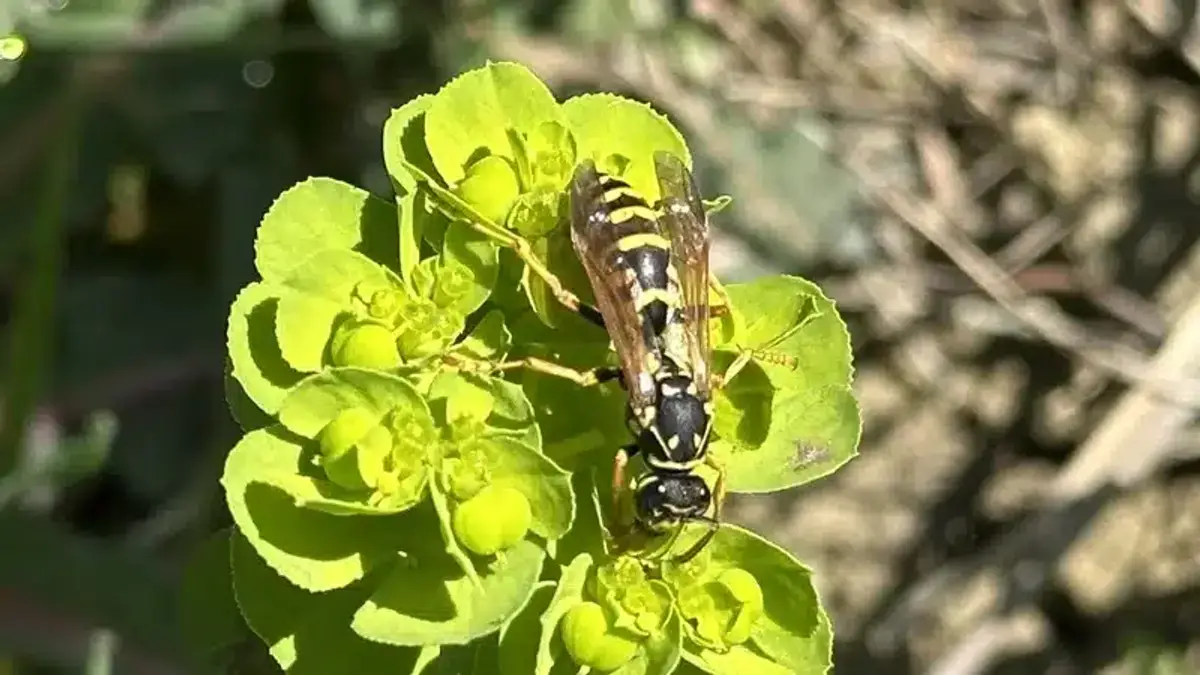
Key Physical Differences Between Wasp and Bee
The easiest way to tell a bee vs wasp apart is by looking at their body structure and texture. Bees are noticeably hairy with fuzzy, barrel-shaped bodies that help them collect pollen. Their branched hairs, called setae, make them excellent pollinators as nectar and pollen stick easily to their bodies.
Wasps, on the other hand, have smooth, shiny bodies with very little hair. They sport the classic “wasp waist” - a dramatically narrow connection between their thorax and abdomen. This gives them a more defined, angular appearance compared to the rounder bee shape.
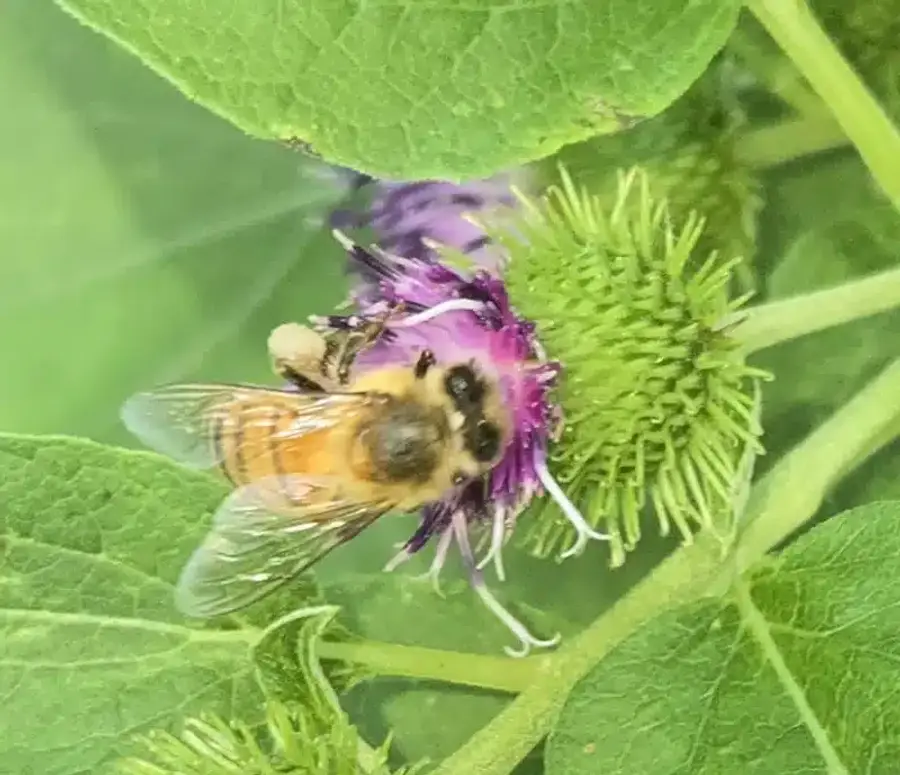
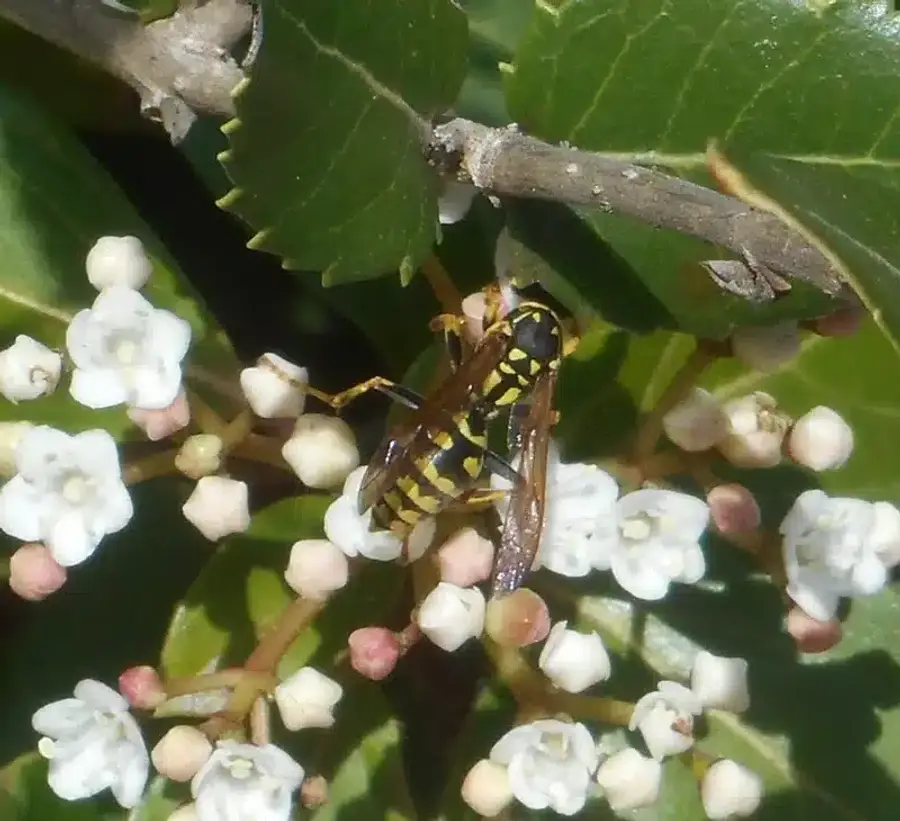
Another telltale difference is how they carry their legs during flight. Bees tuck their legs close to their bodies, while wasps let their legs dangle as they fly. Both insects belong to the order Hymenoptera, which also includes ants and sawflies, but their evolutionary paths diverged millions of years ago.
Color patterns can also help with identification. While both insects often display black and yellow stripes, bees tend to have more muted, brownish tones mixed with their yellow. Wasps typically show brighter, more contrasted yellow stripes against their black bodies.
| Bees | Wasps | |
|---|---|---|
| Body Texture | Fuzzy and hairy | Smooth and shiny |
| Body Shape | Rounded, barrel-shaped | Narrow waist, defined segments |
| Diet | Nectar and pollen only | Nectar + hunt other insects |
| Stinging Ability | Usually once (barbed stinger) | Multiple times (smooth stinger) |
| Aggression Level | Generally docile | More aggressive |
Understanding Hornet vs Wasp Identification
Here’s something that surprises many homeowners: hornets are actually a type of wasp, not a separate insect category. The hornet is simply a larger species of social wasp, typically measuring over an inch long. In our area, the most common hornet is the European hornet, which can grow quite large and is active even at night.
The University of Maryland Extension notes that hornets share the same smooth body and narrow waist as other wasps, just in a bigger package. They also build similar paper nests, though hornet nests can become quite massive - sometimes the size of a basketball.
Yellow jackets, another wasp species you’ll encounter locally, are actually smaller and more aggressive than true hornets. These black and yellow insects are the ones most likely to bother you during outdoor picnics or around trash cans in late summer.
Bee and Wasp Nesting Habits
Where these insects build their homes tells you a lot about what you’re dealing with. Honey bee colonies live in permanent structures - either managed hives or natural cavities like hollow trees. These bee colonies can survive multiple years, with worker bees clustering together to survive winter.
Bumblebee nests are much smaller and often located in the ground, sometimes in abandoned rodent burrows. A social bee colony like this rarely causes problems for homeowners because bumble bees are generally gentle unless their nest is directly disturbed.
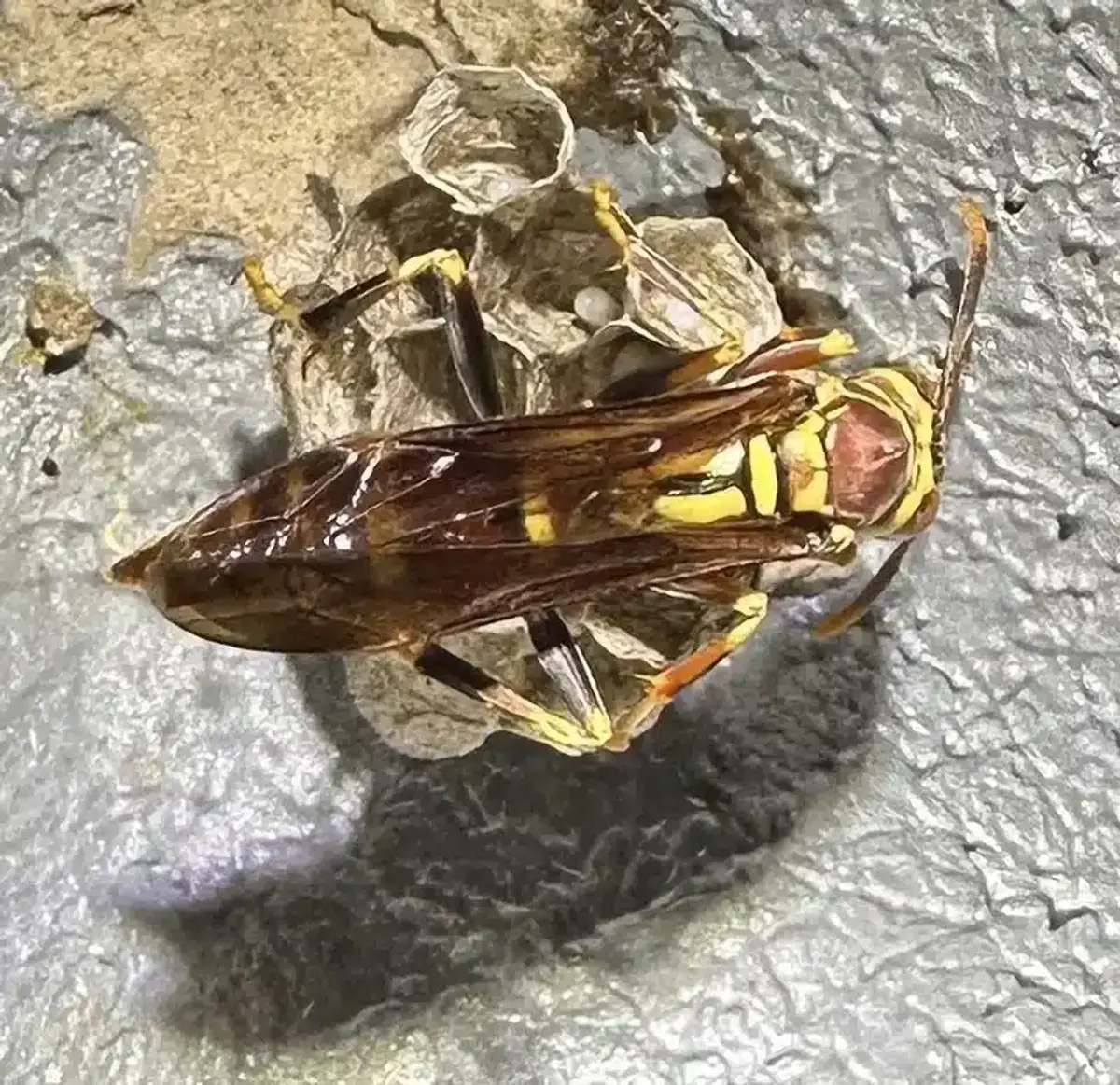
Social wasps build very different structures. Paper wasps create exposed, umbrella-shaped nests under eaves and overhangs. These nests are annual - they’re abandoned after the first frost, and only fertilized queens hibernate during the winter. I’ve helped homeowners remove many of these nests, and it’s fascinating how wasps build them from chewed wood fibers mixed with saliva.
Yellow jackets often nest in the ground or in wall voids, which can make them particularly challenging to locate and treat.
Case Study: Ground-Level Yellow Jacket Nest Threatens Children's Play Area
Last fall, I worked with a homeowner’s association to address a dangerous yellow jacket situation near a community playground. What started as occasional wasp sightings quickly escalated into a serious safety concern.
- Initial signs: Parents noticed more aggressive wasps around the playground area
- Discovery: Ground-level nest entrance hidden in landscaping near play equipment
- Danger level: High traffic area with children running and playing daily
- Challenge: Nest location made traditional removal approaches risky
- Solution: Evening treatment when wasps were least active, followed by immediate area closure
This experience highlighted why professional assessment is crucial - what appears to be isolated wasp activity can indicate a much larger colony that poses significant risk to community safety.
Diet and Foraging: What Bee vs Wasp Eat
The difference between a wasp and bee becomes very clear when you look at their diets. Bees feed exclusively on nectar and pollen throughout their lives. Adult bees visit flowers to gather these plant-based foods, and they feed on nectar for energy while using pollen to feed their developing larva.
Honey bees also make honey from the nectar they collect, storing it in their hive as a winter food source. This is why bee colonies can survive cold months when flowers aren’t available - they have their honey reserves to sustain them.
Adult wasps have a completely different approach. While they also feed on nectar and sugary substances for their own energy, they’re predators when it comes to feeding their young. Worker wasps hunt other insects, chewing them up to feed to wasp larva back at the nest. This makes wasps excellent natural pest controllers.
This dietary difference explains why wasps tend to be more aggressive around food sources. They’re attracted to sugary drinks, ripe fruit, and even protein from your barbecue. Wasps are among the insects that will investigate your outdoor meals, while bees rarely show interest in human food.
Sting Differences: Bee vs Wasp Pain and Danger
When it comes to stinging, the key differences between bees and wasps can be crucial for your response. Most species of bee can only sting once because their stinger is barbed and gets stuck in your skin. Honey bee workers die after stinging because the barbed stinger pulls out part of their abdomen when they try to fly away.
Wasps, including hornets and yellow jackets, have smooth stingers that don’t get stuck. This means a single wasp can sting multiple times, and they often do when defending their nest. The venom from wasp stings also tends to cause more immediate pain than bee stings.
What does the science say? 🔬
According to medical research, wasp stings typically hurt more intensely because wasp venom contains different compounds designed to cause immediate pain and alarm. Bee venom is more focused on the long-term inflammatory response.
Wasp venom contains high concentrations of acetylcholine and serotonin, neurotransmitters that trigger immediate pain signals. This evolutionary adaptation helps wasps defend their colonies more effectively by creating a memorable deterrent experience for potential threats.
Guard bees will defend their nest, but they’re generally less aggressive than social wasps. In my experience, honey bee colonies become defensive mainly when their hive is directly threatened. Bees can sting when protecting their colony, but they rarely pursue people who simply walk near their nest.
Carpenter bee females can sting but rarely do, even when their wood-boring tunnels are disturbed. Male carpenter bees are often seen hovering aggressively around people, but they can’t sting at all - it’s mostly for show.
Beneficial Roles: Why We Need Both Bee and Wasp
Despite their reputation for stinging, both bees and wasps serve important roles in the ecosystem. Bees are our most important pollinators, visiting flowers to collect nectar and pollen while transferring pollen between plants. This process is essential for fruit production in gardens and commercial agriculture.
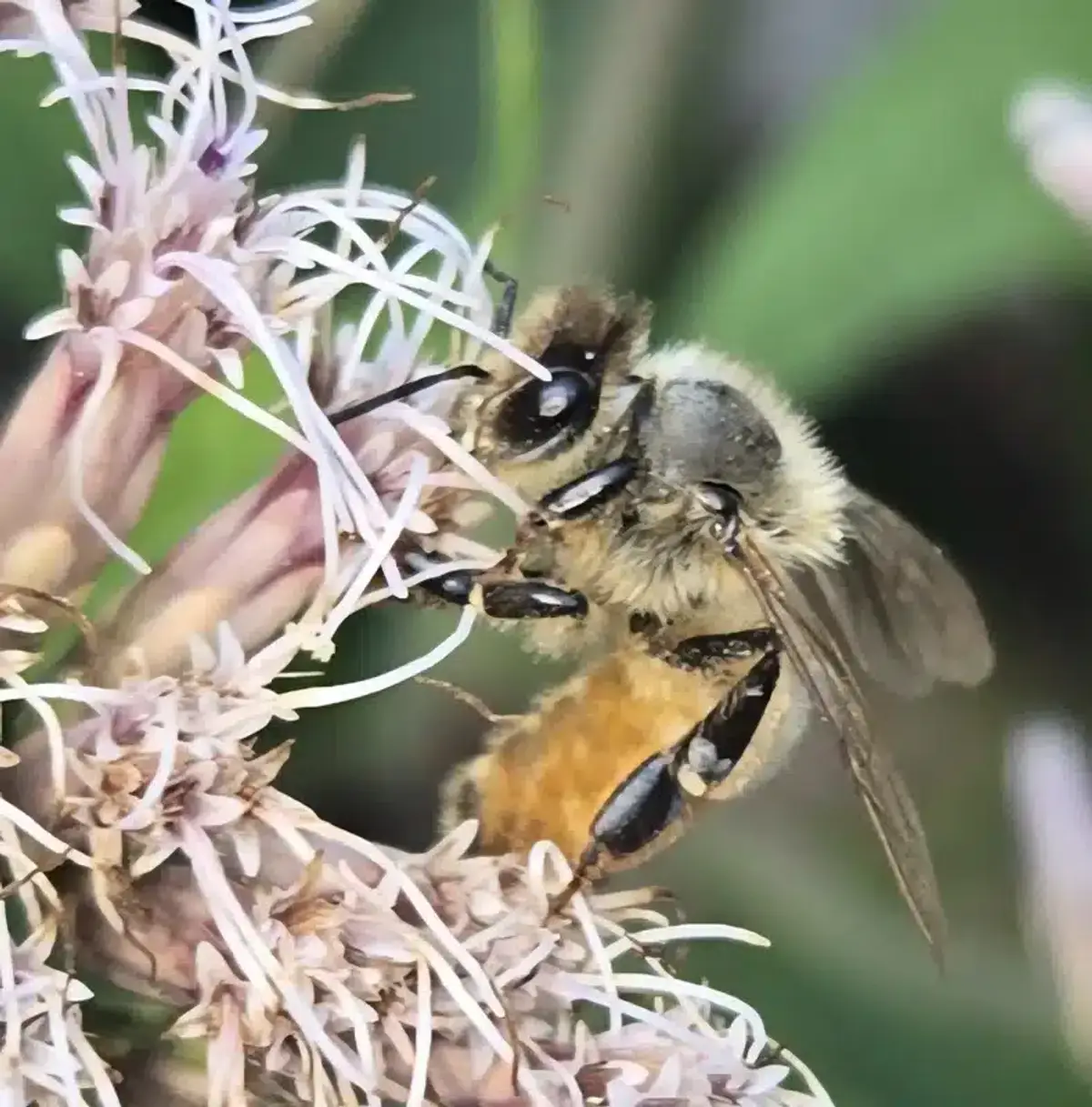
Honey bee colonies are so valuable that many beekeepers in Virginia and Maryland maintain hives specifically to support local agriculture. Native bee species like bumble bees and mining bees are equally important - they often pollinate plants that honey bees can’t effectively reach.
Wasps provide a different but equally valuable service. Research from the University of Maryland shows that wasps are surprisingly effective pollinators for certain plants, though this isn’t their primary ecological role. More importantly, wasps are natural pest controllers.
A single paper wasp nest can eliminate thousands of caterpillars, flies, and other pest insects during a season. Solitary wasps like cicada killers and mud daubers target specific prey, helping keep populations of other insects in balance. Even the aggressive yellow jackets serve this purpose, though they become problematic when their nest sites conflict with human activities.
Seasonal Activity: When to Expect Bee and Wasp Problems
Understanding the seasonal patterns of these insects helps you prepare for encounters. In our region, spring brings the highest bee activity as colonies emerge from winter and begin foraging on early flowers. This is also honey bee swarm season, typically running from late April through May.
Wasp activity follows a different timeline. Queens emerge in March and April to establish new nests, starting as solitary insects. By midsummer, wasp colonies have grown substantially, but they’re usually focused on hunting prey and building their nest.
The most problematic time for wasps is late summer, particularly August and September. This is when colonies reach peak size but natural food sources become scarce. Hungry wasps become more aggressive and are more likely to investigate human food sources. I’ve personally seen situations where homeowners have put themselves at risk because it’s tough to tell if a nest is still active during this period.
Late Summer Safety Alert
August and September are peak danger months for wasp encounters. During this time:
- Avoid outdoor eating areas: Keep food and sugary drinks covered or indoors
- Check before yard work: Inspect areas before mowing or trimming, especially around ground level
- Never approach nests: Even seemingly inactive nests may still house aggressive wasps
- Watch for increased activity: More wasps around trash cans and outdoor spaces is normal but requires extra caution
After the first hard frost, social wasp colonies die off completely. Only fertilized queens survive to hibernate and start new colonies the following year. Bee colonies, however, cluster together in their hives and survive the winter by consuming stored honey.
When to Call for Professional Bee or Wasp Nest Removal
Not every bee or wasp nest requires immediate action, but certain situations definitely call for professional help. Any nest located near high-traffic areas where people frequently walk or children play should be evaluated by a pest control professional.
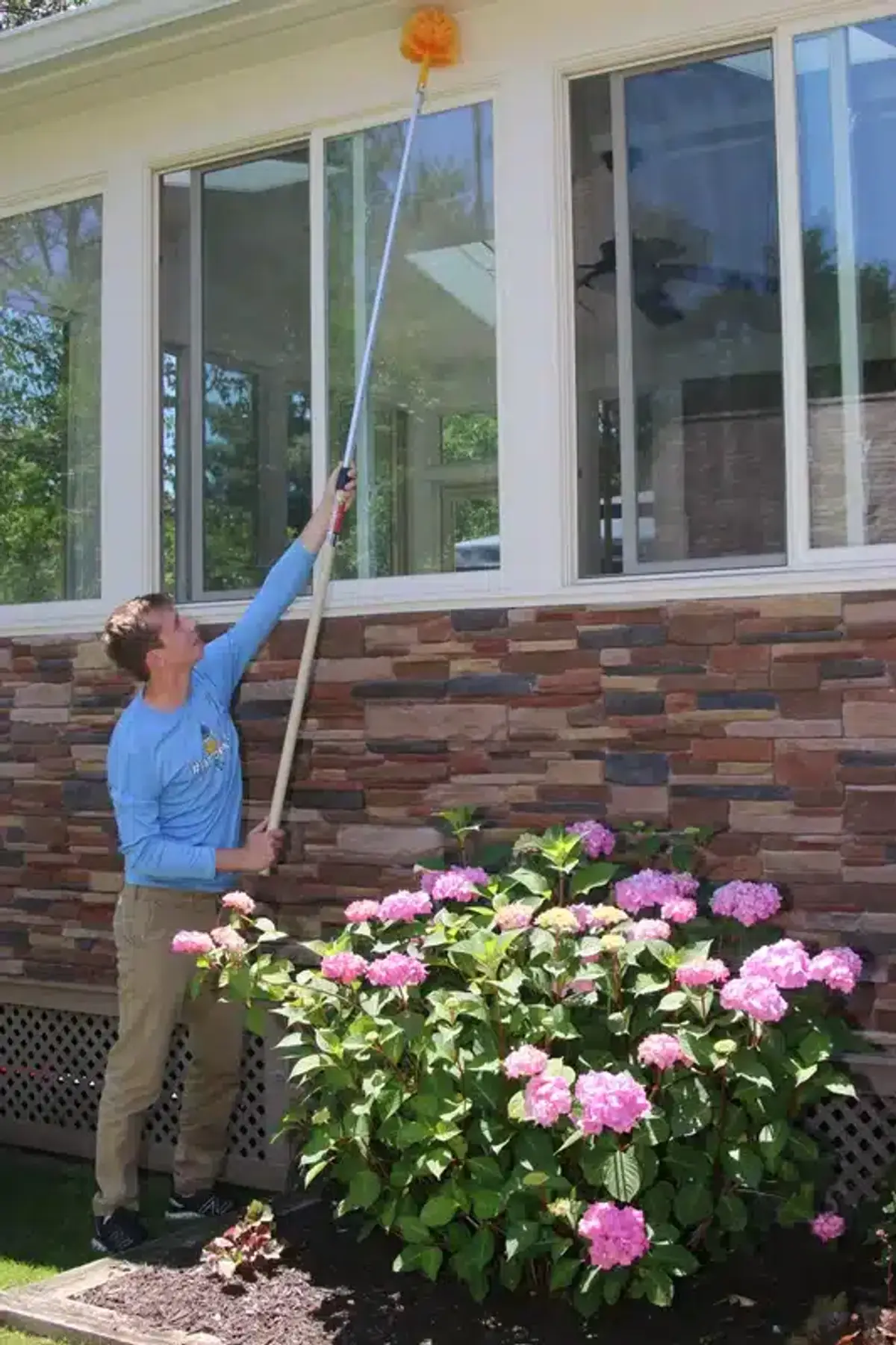
Wasp nests can be very tricky to handle, and as professionals, we always use protective equipment when getting close to these nests because the risk of stings is significant. However, some wasp nests do remain after the wasps have died off and can simply be removed with a broom - but you have to be absolutely sure they’re not active.
For honey bee issues, the approach is completely different. These beneficial insects should be relocated alive whenever possible. Maryland State Beekeepers Association maintains lists of volunteers who will collect honey bee swarms at no charge. In Northern Virginia, similar services are available through local beekeeping organizations.
If you’re ever unsure whether a nest is active or what type of insect you’re dealing with, I highly recommend contacting a pest control company for evaluation. The hands-on situations I’ve dealt with have really shown me how different wasp and bee nests can be - not just in terms of where they’re located, but also in how aggressive the insects can be and the precautions you need.
Common Bee and Wasp Species in Northern Virginia and Maryland
In our local area, you’re most likely to encounter several specific bee species. The European honey bee is probably the most familiar, whether in managed hives or feral colonies in tree cavities. We also have about 14 native bumblebee species that are vital early-season pollinators.
The carpenter bee is another common local species. These large, black and yellow insects excavate perfectly round holes in exposed wood. Female carpenter bees rarely sting, even when their tunnels are disturbed, but they can cause cosmetic damage to decks and fascia boards.
For wasps, paper wasps are extremely common, building their umbrella-shaped nests under eaves and overhangs. The invasive European paper wasp has become particularly abundant in recent years. Yellow jackets represent several different wasp species, all of which build concealed nests and become quite defensive.
The European hornet is our area’s only true hornet species. These impressive insects can fly at night and often build nests in hollow trees or wall voids. Despite their intimidating size, they’re actually less aggressive than yellow jackets.
Bee and Wasp Prevention and Property Management
The best approach to managing bee and wasp issues starts with understanding what attracts them to your property. Eliminating food sources is crucial for reducing wasp problems. Keep outdoor trash cans tightly sealed, clean up fallen fruit promptly, and avoid leaving sugary drinks uncovered during outdoor activities.
For structural prevention, seal gaps larger than a quarter-inch in siding, soffits, and around utility penetrations. Paint or stain bare wood to make it less attractive to carpenter bees. Installing fine mesh screens over attic and basement vents can prevent larger insects from entering these spaces.
Essential Property Maintenance Steps
- Spring Inspection: Check eaves, overhangs, and sheds for early nest construction in March and April
- Seal Entry Points: Caulk cracks in siding, repair damaged screens, and fill gaps around utilities
- Maintain Cleanliness: Remove fallen fruit, keep outdoor dining areas clean, and secure garbage can lids
- Professional Assessment: Schedule annual inspections to catch problems before they become dangerous
Creating bee-friendly spaces doesn’t have to increase your sting risk. Plant native flowering plants away from high-traffic areas to give pollinators abundant food sources. This can actually reduce the likelihood of bees investigating areas where people spend time.
If you discover a bee or wasp nest early in the season when it’s still small, professional removal is typically more straightforward and less expensive than waiting until the colony reaches full size.
Understanding the difference between a wasp vs bee can help you make better decisions about the flying insects around your home. While both play important ecological roles, wasps tend to pose higher risks to people, especially during late summer when colonies are largest and most defensive. Remember that professional identification and removal is always the wisest choice when you’re dealing with any nest near your living spaces.
If you’re dealing with stinging insects around your Northern Virginia or Maryland home and need help identifying what you’re seeing or removing a problematic nest, don’t hesitate to reach out. Our registered technicians have the experience and equipment to handle these situations while keeping you and your family protected. Call us at 703-683-2000 or email info@bettertermite.com for a consultation.
Frequently Asked Questions
What is the difference between a bee and a wasp?
+
The main differences are body hair and shape. Bees have fuzzy, hairy bodies that help them collect pollen, while wasps have smooth, shiny bodies with a pronounced narrow waist. Bees feed only on nectar and pollen, whereas adult wasps eat sugary substances but hunt other insects to feed their larvae. Bees can typically sting only once due to their barbed stinger, while wasps can sting several times with their smooth stinger.
Does a wasp sting worse than a bee?
+
Generally, yes. Wasp stings tend to cause more immediate, intense pain because their venom contains compounds designed to create alarm and defend their nest. Bee stings focus more on longer-lasting inflammation. Additionally, since wasps can sting multiple times while most bees can only sting once, a wasp encounter often results in more stings and therefore more pain overall.
Is wasp good or bad?
+
Wasps are actually beneficial insects that serve important ecological roles. They're excellent natural pest controllers, with a single paper wasp nest eliminating thousands of caterpillars, flies, and other pest insects during a season. Some wasp species also contribute to pollination. However, they become problematic when their nests are located near human activity areas, especially during late summer when they're most aggressive.
Why are wasps not considered bees?
+
While both wasps and bees belong to the same insect order (Hymenoptera), they evolved differently millions of years ago. Bees evolved from predatory wasps that shifted to a plant-based diet of nectar and pollen. Wasps remained predators and omnivores. The key differences include body structure (bees are hairy, wasps are smooth), diet (bees eat only plant materials, wasps are predatory), and behavior (bees are generally less aggressive than wasps).
Can I remove a bee or wasp nest myself?
+
DIY removal is only recommended for small, easily accessible wasp nests and only if you're not allergic to stings. Never attempt to remove honey bee colonies yourself - they should be relocated alive by experienced beekeepers. For any nest near high-traffic areas, in wall voids, or if you're unsure what type of insect you're dealing with, professional removal is much recommended for your protection.
When are wasps most aggressive?
+
Wasps are most aggressive during late summer, particularly August and September. This is when colonies reach their peak size but natural food sources become scarce. Hungry wasps become more likely to investigate human food sources and defend their nest more vigorously. They're also more aggressive when their nest is directly threatened or when vibrations (like lawn mowing) disturb ground-nesting species.
Do carpenter bees sting?
+
Female carpenter bees can sting but rarely do, even when their wood tunnels are disturbed. Male carpenter bees, which are often seen hovering aggressively around people, cannot sting at all - their behavior is mostly for show. Carpenter bees are generally much less aggressive than social wasps or even honey bees defending their hive.
What should I do if I find a honey bee swarm?
+
Honey bee swarms are actually quite docile and should be removed alive by experienced beekeepers. Don't attempt to spray or harm the swarm. Contact the Maryland State Beekeepers Association or Northern Virginia Beekeepers Association - they maintain lists of volunteers who will collect swarms at no charge. Swarms typically move on within 24-48 hours if left undisturbed, but professional collection helps preserve these valuable pollinators.
With five years of hands-on experience in the pest control industry, George Schulz is a registered technician with the Virginia Pest Management Association and a proud third-generation professional in a family business that’s been protecting homes for over 57 years. He manages and trains a team of service pros while also leading internal research efforts—recently spearheading a deep-dive review of thousands of documents on pest control materials to hand-pick the most kid and pet friendly, most effective solutions tailored specifically for homes in the DC metro area.
